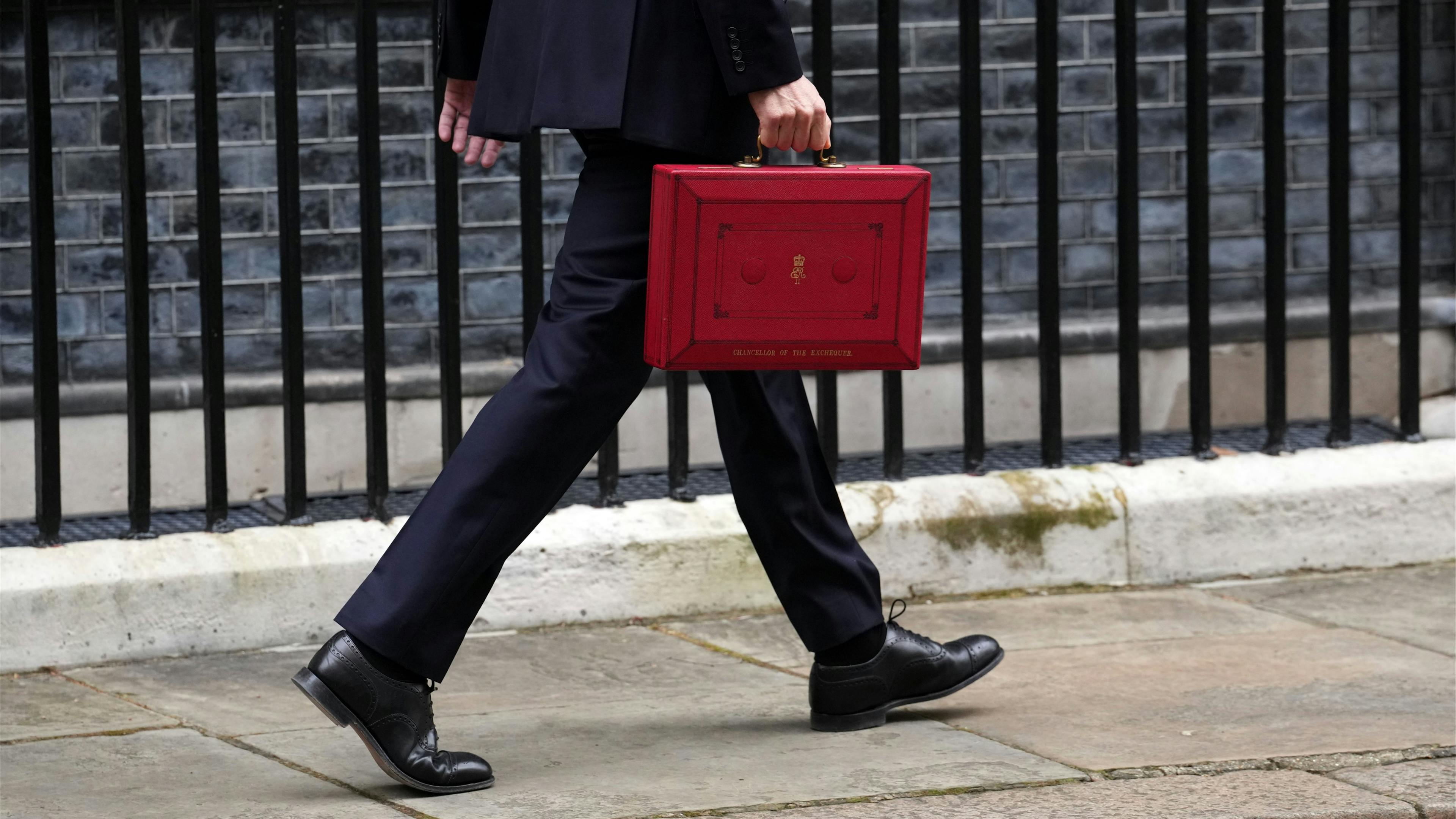Is the UK Bankrupt?

It sounds extreme, but the fact that it’s being asked at all says something. It crops up in client calls, in emails, sometimes muttered on trading desks. The cynic in me suspects this surge in pessimism is partly fuelled by the usual suspects – the louder corners of Britain’s right-leaning press, desperate to conjure a Liz Truss-style meltdown for a Labour government still barely out of the gates. The hope, perhaps, is that if you shout "crisis" long enough, one might actually materialise.
This government faces real challenges; weak growth, stretched public services, and a tight budget. But calling the UK bankrupt or on the verge of an IMF bailout isn’t just wrong, it’s disingenuous, bordering on clickbait economics.
So let’s cut through the noise. The UK is not in perfect health, but it is also not an emerging market on the brink. The reality – as is often the case – sits somewhere in the dull, unsatisfying middle: uncomfortable, but manageable.
What do the fundamentals say?
If we approached the UK the way a credit analyst would – coldly, analytically – we’d focus on three areas:
1. Growth dynamics and economic scale
The UK remains one of the world’s largest economies, with a relatively high GDP per capita and deep, diversified capital markets. Growth has been sluggish, yes – but it's not an outlier, is not contracting, and the UK still enjoys full employment and inflation risks are receding.
G7 real GDP (% change)

Source: Moody’s ratings. Data as at 28 July 2025.
G7 inflation rate (CPI, average annual)

Source: Moody’s ratings. Data as at 28 July 2025.
2. Institutional strength
Whatever your view of Westminster, the UK benefits from a long-standing institutional framework that underpins economic resilience. Its legal system, central bank independence, and mature – if occasionally soap-operatic – political process all help to reinforce investor confidence. But recent events have tested that confidence. Despite Labour’s large parliamentary majority, the government’s failure to pass welfare spending cuts without gutting them of substance exposed a degree of policy fragility surprising in a government with such a large majority.
Gilt investors are understandably on edge and a credible commitment to closing the current fiscal gap would go some way to easing concerns and re-establishing policy credibility.
Yet it's notable that while the UK is under scrutiny, markets appear far more relaxed about the US – despite rising deficits, growing political polarisation, and ongoing attacks on institutional norms. The contrast speaks less to relative fundamentals than to market complacency, and serves as a reminder that the UK must work harder to earn the benefit of the doubt.
3. Fiscal strength
Here’s where the headlines get lazy. Debt is high – but so is everyone’s. What matters more is whether the debt burden is sustainable and affordable.
Government debt: At 100% of GDP, the UK government debt burden is high. However there are 14 sovereigns with higher as a percentage of GDP. Perhaps more relevant than comparing debt against GDP is comparing it against government revenues. At ~244%, the UK sits around the middle of the G7.
G7 government debt/GDP and debt/revenue

Source: Moody’s ratings. Data as at 28 July 2025.
Debt affordability: Equally important is the affordability of that debt. Interest Payments as a percentage of GDP is at 3.2% for the UK – slightly higher than the US, but well below Italy. As a percentage of Government Revenue, it is 7.8% – in line with Italy and Canada, and again below the US. Indeed, this ranks the UK in 48th percentile of sovereigns – hardly alarming.
G7 government interest payments/revenue

Source: Moody’s ratings. Data as at 28 July 2025.
The UK’s interest burden is historically high, but as inflation recedes and gilt yields fall, costs should remain close to long-run averages.
UK debt interest spending relative to GDP and revenues

Source: Office of Budget Responsibility, Office of National Statistics. Data as at 26 March 2025.
Fiscal balance: The UK’s fiscal position is undoubtedly fragile while the deficit remains stubbornly wide at around 5% of GDP. Stickier inflation has delayed the Bank of England’s ability to cut rates, while ongoing quantitative tightening has crystallised large losses on the Bank’s gilt holdings – creating losses that the Treasury must fund. Compounding matters, the UK’s unusually high proportion of index-linked debt has amplified the impact of elevated inflation, driving a sharp and lingering spike in debt servicing costs.
Recent policy reversals, such as the welfare spending U-turn, have also raised questions about the government’s political capacity to deliver fiscal consolidation. But unlike in the US, where fiscal expansion continues largely unchecked, the UK still operates within a defined, politically salient framework of self-imposed fiscal rules. Chief among them is the commitment to have debt falling as a share of GDP within five years, a rule that now binds in 2029–30.
While not enshrined in law, this framework remains central to the UK’s fiscal credibility. It’s one reason why market scrutiny, although intense, is still grounded in the belief that some form of discipline will prevail. That said, fiscal headroom is narrow and the levers are limited: borrowing more would breach the rules and risk rekindling the ghosts of the 2022 mini-budget.
In that light, the very presence of a credible rulebook, however politically inconvenient, should be seen as an underappreciated asset. Unlike the US, which has effectively abandoned medium-term fiscal targets, or Germany, where the debt brake is increasingly treated as optional, the UK’s fiscal rules still matter. This constraint is a double-edged sword, but it signals a willingness to impose discipline, even at political cost.
G7 government primary balance/GDP

Source: Moody’s ratings. Data as at 28 July 2025.
…These are not the metrics of a country teetering on collapse.
IMF bailout? A misunderstood analogy
The idea of the UK turning to the IMF is loaded with historical trauma. But 1976 was a very different beast. Back then, the UK ran large external deficits, inflation was out of control (at 25%), and borrowing was heavily FX-denominated. Today? The UK issues debt in its own currency, so there is no FX mismatch and no dependence on foreign-currency debt. Further, the domestic bond market is liquid and functioning.
Unlike an emerging market, the UK cannot experience a classic sovereign debt crisis. Inflation is a risk, but it is falling.
What’s really going on?
If you want to understand the UK’s fiscal pressures, start with two things: Brexit and demographics.
- Brexit has dented productivity by raising trade frictions, limiting labour mobility, and creating regulatory divergence with key markets. Business investment has lagged, and the UK is no longer seen as a natural hub for pan-European operations. This has made the economy more insular and less dynamic — a drag on future tax revenues and growth potential.
- An ageing population means a growing share of national income will be devoted to health, social care, and pensions. The old-age dependency ratio is rising steadily, and with it, pressure on working-age taxpayers. Without meaningful reform, the fiscal burden will tilt further toward age-related spending, crowding out other public investment.
These are not issues unique to the UK — most advanced economies face similar demographic headwinds — but Brexit has made the UK’s challenge uniquely homegrown and harder to offset with immigration or investment flows. The cumulative effect is a structural squeeze on growth and fiscal space.
These pressures demand clear-headed, long-term policy choices: how to boost productivity, sustain public services, and fund future obligations without overburdening younger generations or scaring off investors. But they do not mean the UK is bankrupt — they mean the UK must plan, reform, and prioritise.
The mini-budget hangover still lingers
UK gilt yields remain elevated relative to peers. The spread to German Bunds is at its widest since reunification. The spread to US Treasuries is close to decade highs.
10 Year UK Gilt yield spread over G7 average

Source: Bloomberg. Data as at 25 July 2025.
A big reason for this is the residual scar tissue from the 2022 mini-budget. That crisis shattered investor confidence in the UK’s fiscal management – and we’re still paying a credibility premium. Rebuilding trust will take time. GBP seems to have shrugged it off, but the bar is higher for Gilts.
G7 10yr government bond real yields

Source: Bloomberg. Data as at 28 July 2025.
But there’s another layer: the UK bond market is heavily reliant on foreign buyers. This introduces what we call a “tourist premium” – foreign investors are more jumpy, and when sentiment turns, they sell first and ask questions later. It makes UK yields more volatile – but not necessarily more informative.
Will UK Gilts still act as a safe haven in a recession?
In past slowdowns, long-end yields fall – even when fiscal concerns are lurking. While the yield curve may steepen during periods of uncertainty, history shows that when central banks cut and growth slows, the whole curve shifts lower.
And that’s where gilts get interesting again.
- Term premium – the extra yield investors demand for long-dated bonds – already looks excessive
- A proper growth scare would likely push yields down, especially if the Bank of England turns more dovish
- Long gilts, already pricing in a healthy risk buffer, could be a compelling opportunity in that scenario
UK 5y-30yr term premium vs average

Source: Bloomberg. Data as at 23 July 2025.
A final thought
It's easy to be pessimistic about the UK. The economy is slow, the politics are fractious, and the press is always waiting for the next crisis. But the idea that we are bankrupt – or heading for IMF help – is not analysis. It’s hyperbole.
The fundamentals say otherwise:
- Inflation is falling
- Growth, while weak, is not collapsing
- Debt remains affordable
- Gilts are liquid and well-bid
If anything, the UK may be under-owned. Real yields are high, the currency is stable, and fiscal orthodoxy is back in fashion. The Bank of England may also be in a stronger position than the Federal Reserve or European Central Bank (ECB) to cut rates more decisively – a potential tailwind for gilts.. Challenge plans, question sustainability – but don’t declare failure before the facts are in.
In fixed income, we’re paid to be sceptical – but not to panic. Our job is to look past the noise and price the risk. On that basis, long-dated gilts look less like a crisis signal and more like an opportunity.
And after watching the Lionesses lift the Euros trophy last week – a moment that gave me a profound sense of pride in this country – I’m reminded that a bit more belief, and a bit less doom-mongering, wouldn’t go amiss.




